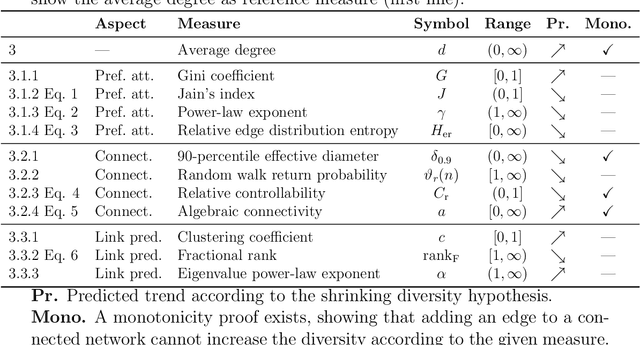Modeling the Evolution of Networks as Shrinking Structural Diversity
Paper and Code
Sep 21, 2020



This article reviews and evaluates models of network evolution based on the notion of structural diversity. We show that diversity is an underlying theme of three principles of network evolution: the preferential attachment model, connectivity and link prediction. We show that in all three cases, a dominant trend towards shrinking diversity is apparent, both theoretically and empirically. In previous work, many kinds of different data have been modeled as networks: social structure, navigational structure, transport infrastructure, communication, etc. Almost all these types of networks are not static structures, but instead dynamic systems that change continuously. Thus, an important question concerns the trends observable in these networks and their interpretation in terms of existing network models. We show in this article that most numerical network characteristics follow statistically significant trends going either up or down, and that these trends can be predicted by considering the notion of diversity. Our work extends previous work observing a shrinking network diameter to measures such as the clustering coefficient, power-law exponent and random walk return probability, and justifies preferential attachment models and link prediction algorithms. We evaluate our hypothesis experimentally using a diverse collection of twenty-seven temporally evolving real-world network datasets.
 Add to Chrome
Add to Chrome Add to Firefox
Add to Firefox Add to Edge
Add to Edge